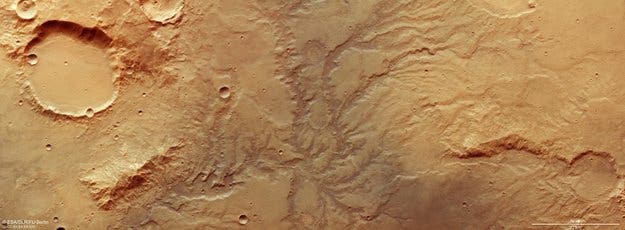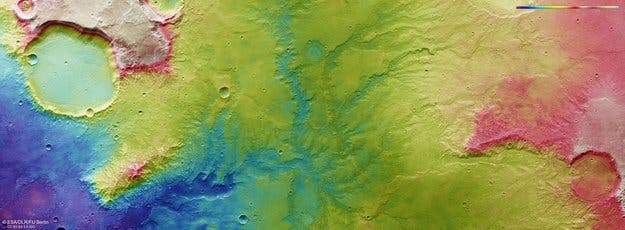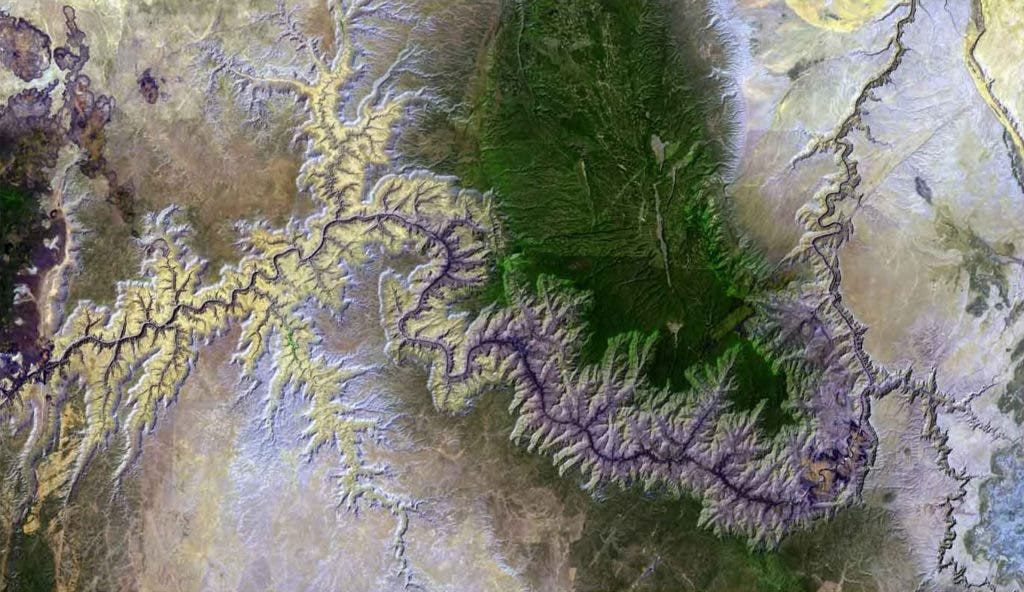
Mars is cold, barren, and totally inhospitable — but it wasn’t always so. We now know that the red planet was once wet, hosting a thick atmosphere under which huge rivers, even oceans, existed for millions of years. What’s more, a 2018 observation suggests that liquid water may still lurk in some isolated locations on Mars, such as in a 20 kilometer-wide subglacial lake that lies just 1.6 kilometers beneath the surface, near the south pole of Mars.
Some of the remnants of this watery past were first proposed by Italian astronomer Giovanni Schiaparelli, who observed mysterious straight lines along the planet’s equatorial regions in 1877. Schiaparelli called them canali (canals). However, what he saw was merely an optical illusion produced by the lens of his telescope. But, ironically, there really are canali, or watercourses, on Mars. It was only much later, with the advent of high-resolution telescopes and after we sent spacecraft to Mars, that this became evident. Now, a set of spectacular images released by the European Space Agency (ESA) shows some of the clearest evidence of ancient Martian rivers.
The images, captured by ESA’s Mars Express satellite, focus on a single region — a system of valleys located in the southern highlands of Mars, east of a huge impact crater called Huygens and north of Hellas, which is the largest impact basin on the red planet.


According to ESA scientists, the branching, desiccated system of trenches and valleys were actually carved by flowing water, and are likely 3.5 to 4 billion years old. The topography of the region suggests that water used to flow downhill from the north (right-hand side in the images) to the south (left-hand side on the images). The river system, which follows a dendritic pattern akin to tree branches or brain cells, carved out valleys up to 2 km (1.2 miles) across and 200 meters deep (650 ft.).
The valleys that we can see today have undergone heavy erosion since they formed, which is most visible in the form of the fragmented and smoothed valley rims. In the ESA images, you can see such signs of erosion cutting valleys from east to west.
The similarities to river systems here on Earth is striking. One can see various channels splitting from a central valley, forming tributaries, which can split again on their journey downstream. In this particular case, the branching channels were likely formed by surface water runoff from a river combined with extensive rainfall.

Scientists would now like to know where all of this water came from. Was it rain, groundwater, melting glaciers, or all of them combined? This leads us to an even more important question: given its wet and warm past, could life have appeared on Mars like it did on Earth? This will actually be the main object of inquiry for the upcoming ExoMars mission — a collaboration between ESA and Russia which will land a rover named after Rosalind Franklin and a surface science platform on Mars. The rover will be tasked with drilling below the surface in search of microbial life — the very first mission of its kind. In the future, ESA would like to embark on an even more ambitious mission that might one-day return samples from Mars to Earth.






